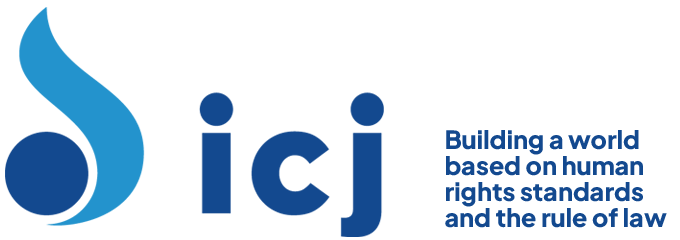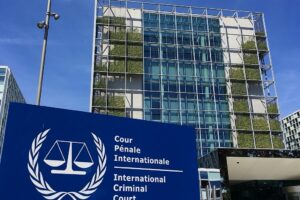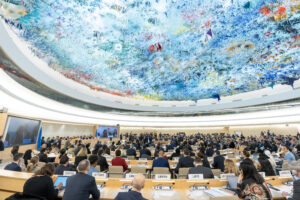II. Understanding adolescence and its implications for the right to health
A. A period of transition
12. The transition towards adulthood is characterized by the changing nature of relationships. Across cultures, adolescents begin to attach far greater significance to and are increasingly influenced by their peer group and less by family and caregivers.{{14}} Adolescents also begin to explore their sexuality, sexual orientation and gender identity. There is considerable diversity in combinations of gender identities, expression and sexual orientation, irrespective of whether such diversity is culturally accepted.{{15}} It is increasingly clear that sexual orientation and gender identity derive from a complex interplay of biological, genetic and social factors and that individuals have little or no choice in its determination.{{16}}
B. Health care and other health-related services essential for adolescent health
32. States should develop a core package of interventions for adolescents, including to sexual and reproductive health services, that are available free of charge. Services must be designed and delivered in a manner consistent with the evolving capacities, developmental needs and the best interests of adolescents. They must respect adolescents’ right to privacy and confidentiality, address different cultural needs and expectations and comply with ethical standards. Services must be sensitive to gender and lesbian, gay, bisexual, transgender and intersex status, they must be non-judgemental regarding adolescents’ personal characteristics, lifestyle choices or life circumstances and they must treat all adolescents with dignity and respect, consistent with their status as rights holders.
C. Underlying and social determinants of health
36. States must take legal, policy and other measures to address the underlying and social determinants of adolescent health, including: road and environmental safety; racial prejudice; access to education; persistence of forced and early marriage; corporal punishment; social, economic, political, cultural and legal barriers to health services, including sexual and reproductive health services; inadequate social protection; institutionalization; punitive drug laws; absence of comprehensive sexuality education; criminalization of exposure, non-disclosure of HIV status and transmission of HIV; criminalization of same-sex relationships; and lax legal frameworks governing the sale of tobacco, alcohol and fast foods.
37. Measures to address the right to health should be holistic and integrated, go beyond the provision of health services and be underpinned by cross-departmental commitment. States should take account of and respond to the particular challenges faced by different groups, such as younger and older adolescents, males, females and lesbian, gay, bisexual, transgender and intersex persons.
Right to protection from all forms of violence
38. Exposure to violence increases during adolescence, to the point that it is a primary cause of mortality and morbidity in the second decade.{{22}} Violence occurs in the family, in the community, at work or at the hands of State actors.
39. Adolescent girls, adolescents with disabilities, lesbian, gay, bisexual, transgender and intersex adolescents, adolescents living in institutions and adolescents from communities with a proliferation of unregulated weapons or experiencing armed conflict are among those particularly vulnerable to violence. The risks for girls include, for example, exposure to sexual violence and exploitation, forced and early marriage, honour killings and abusive practices often carried out in health-care settings, such as forced sterilization and forced abortion for girls with disabilities, and forced virginity testing.{{23}}
41. Lesbian, bisexual and transgender youth are at risk of “punitive” rape on the basis of their sexual orientation or gender identity. Adolescents suffer disproportionately from the effects of gun violence and significant numbers of adolescents face serious harm or death as a consequence of armed conflict.
D. Right to non-discrimination
51. Adolescence itself can be a basis for discrimination, with many adolescents treated as dangerous or hostile, incompetent to make decisions, incarcerated, exploited or exposed to violence as a direct consequence of their age. Health-care providers may perpetuate discrimination against adolescents when they deny them health services or contraceptive supplies or treat them poorly, which can make adolescents reluctant to seek the health-care they need. Adolescents belonging to marginalized groups or sectors, such as girls, racial or ethnic minorities, indigenous populations, lesbian, gay, bisexual, transgender and intersex adolescents, refugees and adolescents with disabilities, face a heightened risk of exclusion.
IV. Promotion of emotional well-being and mental health
A. Nature and prevalence of mental health problems in adolescence
69. The risk of experiencing mental ill-health is heightened by poverty and by adverse childhood events, including, for example, sexual and emotional abuse, bullying and parental loss. Adolescents in post-conflict or disaster settings or who are homeless and street-involved, orphaned, lesbian, gay, bisexual, transgender and intersex or involved with the juvenile justice system are also at greater risk. Adolescents in the juvenile justice system suffer substantially higher rates of mental health conditions than those in the general population, with an estimated 70 per cent having at least one diagnosable mental health condition.{{45}}
73. Public and self-stigmatizing attitudes towards mental illness, concerns about confidentiality and lack of general understanding all serve as barriers to getting help, particularly among adolescents, a problem compounded by the lack of quality mental health services in low- and middle-income countries.{{50}} For adolescents, the attitude of service providers is more important than their technical expertise. Adolescents who seek services often experience negative or hostile responses from health-care providers, leading to a further reluctance to access help. Same-sex attraction is still considered by doctors in many countries to be a mental disorder.{{51}} Lesbian, gay and bisexual adolescents may be subjected to harmful therapeutic interventions intended to eliminate or suppress their sexual instincts. Such therapies have been deemed unethical, unscientific, ineffective and, in some instances, tantamount to torture.{{52}}
V. Adolescents’ rights to sexual and reproductive health
A. Nature of and challenges associated with sexual and reproductive health rights
84. Many adolescents, in particular girls and those identifying as lesbian, gay, bisexual and transgender, are deterred from approaching health professionals in anticipation of a judgemental attitude that results from social norms or laws that stigmatize or criminalize their sexual behaviour. Rights to sexual and reproductive health for many adolescents are further compromised by violence, including sexual and institutional violence, coercion into unwanted sex or marriage, and patriarchal and heteronormative practices and values. This reinforces harmful gender stereotypes and unequal power relations that make it difficult for many adolescent girls to refuse sex or insist on safe and responsible sex practices.
85. The vulnerability of boys to physical and sexual abuse and exploitation should be highlighted, together with the significant barriers they face in accessing sexual and reproductive information and services. Intersex adolescents often experience particular challenges because of irreversible and non-consensual surgeries performed during their early childhood and because of the natural development of their bodies.{{59}} Discrimination within the family and society, as well as discriminatory attitudes by health providers, can result in the denial of access to health services, while lack of knowledge and awareness within the medical profession further impedes access to quality care.{{60}}
87. AIDS is the second most common cause of death among adolescents globally.{{64}} Worldwide, adolescents in key population groups, including gay and bisexual boys, transgender adolescents, adolescents who exchange sex for money, goods or favours and adolescents who inject drugs, are also at a higher risk of HIV infection. Adolescent girls in high-HIV burden countries are particularly vulnerable, making up 75 per cent of new infections in Africa in 2013,{{65}} with gender inequality, harmful traditional practices and punitive age of consent laws identified as drivers of the epidemic.{{66}} These sectors and groups face a disproportionately high risk of experiencing stigma, discrimination, violence, rejection by families, criminalization and other human rights violations when seeking sexual and reproductive health services, including denial of access to health-care services, such as HIV testing, counselling and treatment.
91. Furthermore, States should introduce measures to raise adolescents’ awareness of their rights to sexual and reproductive health and to services and goods at the family, school and community levels. Age-appropriate, comprehensive and inclusive sexuality education, based on scientific evidence and human rights, should be part of the mandatory school curriculum, with special attention given to relationships, sexuality, gender equality and identity and sex characteristics, including non-conforming gender identities, responsible parenthood and sexual behaviour, and preventing early pregnancy and sexually transmitted infections.{{73}}
94. The Special Rapporteur deplores the imposition of treatments to try to change sexual orientation and gender identity, including forced sex assignment surgeries for intersex youth, forced sterilizations and abortions for girls with disabilities, the use of surgery and hormone therapy to stunt the growth of children with developmental disabilities and remove their reproductive organs, and the pathologizing of transgender identity and same- sex attraction as psychiatric disorders. States should eliminate such practices and to repeal all laws criminalizing or otherwise discriminating against individuals on the basis of their sexual orientation or gender identity and expression.{{76}} There is a need to reform and update national health information systems to include human rights concepts and variables such as lesbian, gay, bisexual and intersex status.{{77}}
VII. Conclusions and recommendations
113. In connection to sexual and reproductive health rights, the Special Rapporteur recommends that Governments:
(d) Guarantee the provision of age-appropriate, comprehensive and inclusive sexuality education, based on scientific evidence and human rights, as part of the school curriculum;
(e) Repeal laws criminalizing or otherwise discriminating against individuals on the basis of their sexual orientation or gender identity, and put an end to practices and treatments aimed at changing sexual orientation and gender identity.
Link to full text of the report: report-srhealth-2016-eng
[[14]]14. Clea McNeely and Krishna Bose, “Adolescent social and emotional development : a developmental science perspective on adolescent human rights”, in Human Rights and Adolescence, Jacqueline Bhabha, ed. (2014). [[14]]
[[15]]15. Ibid.[[15]]
[[16]]16. See www.apa.org/topics/lgbt/orientation.aspx. [[16]]
[[22]]22. WHO, Health for the World’s Adolescents. [[22]]
[[23]]23. See joint general recommendation No. 31 of the Committee on the Elimination of Discrimination against Women/general comment No. 18 of the Committee on the Rights of the Child on harmful practices. [[23]]
[[45]]45. Ibid. [United Nations, Mental Health Matters: Social Inclusion of Youth with Mental Health Conditions, (2014).][[45]]
[[50]]50. Amelia Gulliver, Kathleen Griffiths and Helen Christensen, “Perceived barriers and facilitators to mental health help-seeking in young people: a systematic review”, BMC psychiatry, vol. 10, No. 1 (2010), p. 113.[[50]]
[[51]]51. United Nations Development Programme and USAID, “Being LGBT in Asia: China country report” and “Being LGBT in Asia: Cambodia country report”.[[51]]
[[52]]52. A/HRC/29/23.[[52]]
[[59]]59. A/70/213.[[59]]
[[60]]60. A/HRC/32/44.[[60]]
[[64]]64. WHO, Health for the World’s Adolescents.[[64]]
[[65]]65. UNAIDS and the African Union, Empower Young Women and Adolescent Girls: Fast-Tracking the End of the AIDS Epidemic in Africa (2015).[[65]]
[[66]]66. E/CN.4/2005/72.[[66]]
[[73]]73. General Assembly resolution 70/137 and UNESCO, International Technical Guidance on Sexuality Education (2009).[[73]]
[[76]]76. See A/HRC/22/53; CRC/C/RUS/CO/4-5; CRC/C/GAM/CO/2-3, paras. 29-30; and CRC/C/CHE/CO/2-4, paras. 42-43.[[76]]
[[77]]77. Pan American Health Organization resolutions CD50.R8 and CD52.R6.[[77]]




